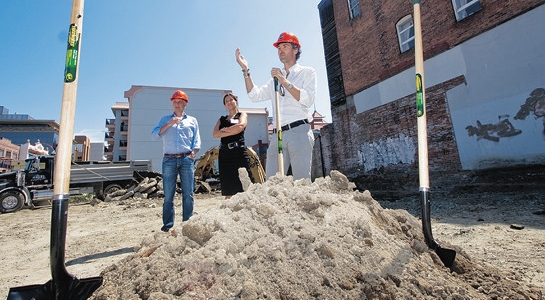Be proactive by watching for signs such as covered windows, venting odours, late-night deliveries
Tony Gioventu
Province
Dear Condo Smarts: What do you do when your strata has a dangerous person living in the complex? In February, there was a police raid in one of the town houses in our complex. Two people were arrested and a marijuana growing operation was busted. Now the strata is still trying to clean up the pieces from the grow op and there is damage to units on either side of the grow op. Our insurance does not cover damages due to grow ops and the cost for restoration to the neighbours units is almost $100,000. Our 38-unit strata simply does not have enough money to make the repairs to the common areas, including the attics, roofing, and mould contamination. What recourse do strata corporations have against grow ops? To our strata, it is the worse-case scenario and we’re going to be left paying the bills because someone else ran an illegal operation.
— DW, Richmond
Dear DW: You are absolutely right about one thing: a grow op or meth lab can be almost the worst thing to happen. In most cases, there is no insurance. In addition, if there is any type of toxic or chemical contamination, it may require the evacuation of an entire building or complex for an extended period of time.
Being proactive is one of the first steps. Watch for the signs of sealed-up units, covered windows, venting smells at night, owners paying strata fees in cash, frequent late-night or secret deliveries, gardening supplies in the trash, unauthorized alterations to exhaust fans and locations. Alone, the indications are common, but combined with an owner or occupant who refuses to permit inspection of a strata lot, they are a good sign of an illegal activity.
Strata corporations can also contact their local community police office to report unusual activities, or for additional security assistance and information. Most neighbours are aware of a grow op, however are often concerned for their safety and reluctant to file complaints. Council can act for the owners and contact the authorities.
When you discover a grow op, make sure the police are called first. Once the authorities are done, your next steps are critical. Contact the local bylaw enforcement officer of your local government and find out what is being done about the orders to repair the strata lot and adjacent lots that are damaged. Everything from walls and windows, to structure, roofing, insulation, plumbing electrical and all finishes may have to be replaced.
The Strata Property Act gives the strata corporation a significant amount of power to enforce the repairs and recover funds from the eventual proceeds of the sale of the strata lot. Sections 83-85 refer to work orders.
These are orders issued to the strata lot owner and often include and name the strata corporation. Under section 85, if an owner does not perform the work, the strata corporation has the ability to advise the owner it is going to commence the work within one week, proceed with the work if the owner does not appeal or commence, and the owner must reimburse the strata corporation for the cost.
The real strength in this measure is that under the act, the amount becomes lienable, and the strata corporation may seek an order for sale of the strata lot to recover the amount. Even if the property is mortgaged, the strata corporation’s claim will take priority. The strata council needs to act quickly to seek legal advice on its next steps to ensure the work is performed properly, in a timely fashion and that the strata lot owners are not left holding the cost. In the event the property is seized under the proceeds of crime legislation, your lawyer’s assistance will be invaluable. We have worked with many strata corporations that have been the victims of grow ops and meth labs, and provided the strata takes action quickly and engages an experienced lawyer in the topic, the results are positive.
Tony Gioventu is executive director of the Condominium Home Owners’ Association. E-mail tony@choa. bc. ca
© Copyright (c) The Province













